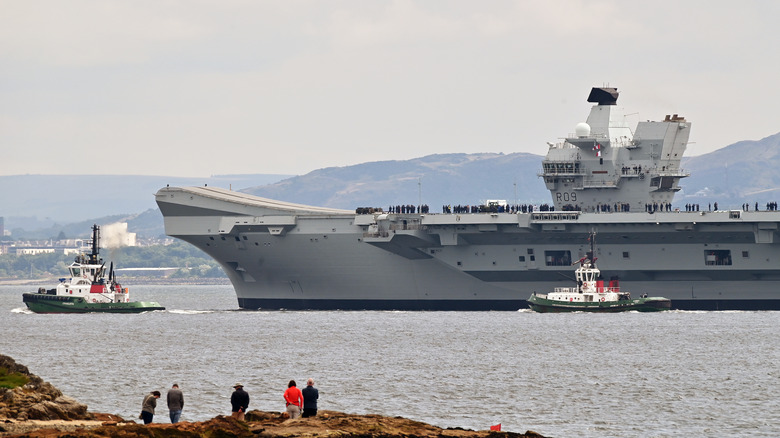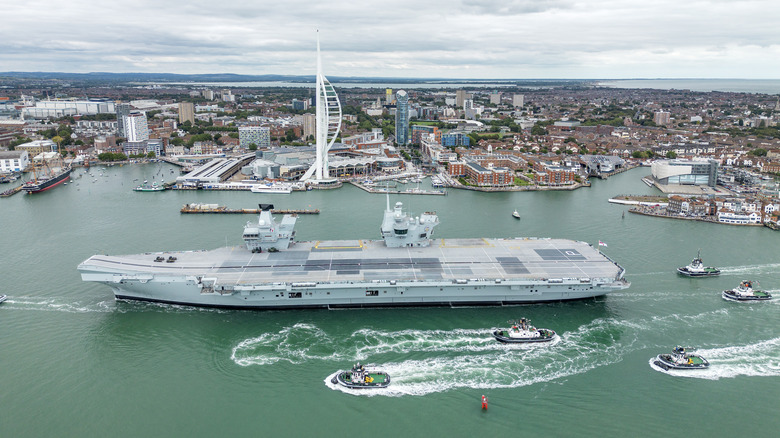How Drones Are Changing The Way Aircraft Carriers Operate
When thinking about the best military drones, most people probably focus on their offensive capabilities. But new developments, including a recent test carried out by the British navy, prove that unmanned aircraft could soon serve in major support roles on aircraft carriers, in addition to expanded offensive capabilities.
On September 8, the Royal Navy launched a drone built by British manufacturer W Autonomous Systems. The aircraft, which can carry up to 220 pounds of cargo for up to 620 miles, made a delivery to the Queen Elizabeth-class HMS Prince of Wales and returned to the mainland in a successful first test for the nation's armed forces. The drone is capable of operation without a remote pilot, making it a valuable tool for supply transport.
The test is a proof of concept for a future in which drones will be integrated into the Royal Navy's Carrier Strike Groups, operating alongside manned fighter jets and helicopters. Other countries have similar plans. The U.S. Navy has for years been flying drones from its ships, and Turkey will soon introduce an aircraft carrier, the TCG Anadolu, purpose-built to operate a drone wing.
Drone wings will soon be commonplace on aircraft carriers
The Royal Navy's September test, in which a drone delivered cargo, was soon followed up by another test in November, which marked an even greater achievement. A press release from the Royal Navy on November 17 announced that the HMS Prince of Wales, off the coast of Virginia, launched and recovered a large drone from its flight deck. Previously, the United States had been the only country to achieve drone takeoff from an aircraft carrier.
It may not seem surprising that a drone could take off and land on an aircraft carrier, but it's a milestone achievement. The flight deck of an aircraft carrier is subject to movement from the water, pitching and tilting as the ocean tosses the vessel. Moreover, aircraft carrier runways are perilously short compared to those on land, meaning that even for a highly trained navy pilot, landing on an aircraft carrier is one of the most dangerous and difficult things they will ever do.
Unlike the cargo drone launched in September, the drone launched in the November test was a remotely piloted model codenamed Mojave, a version of the MQ1C Gray Eagle designed for long endurance missions. The Royal Navy says, "Mojave is capable of performing numerous long endurance missions from medium altitude." Yes, that means it will make things go kaboom, as it can be loaded with up to 16 Hellfire missiles while its pilot operates from the safety of the carrier deck.
The strategic implications of both tests are immense. Since the U.S. has lost its monopoly on carrier drone operations, it will not be long before any developed country can operate drone wings from carriers. Portable, unmanned strike capabilities and support operations will be at the forefront of future military operations.

